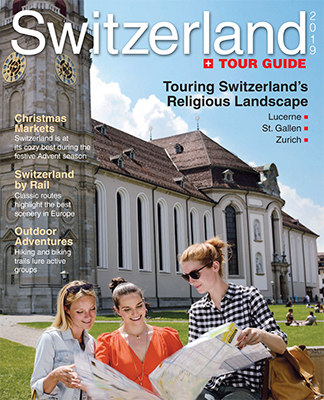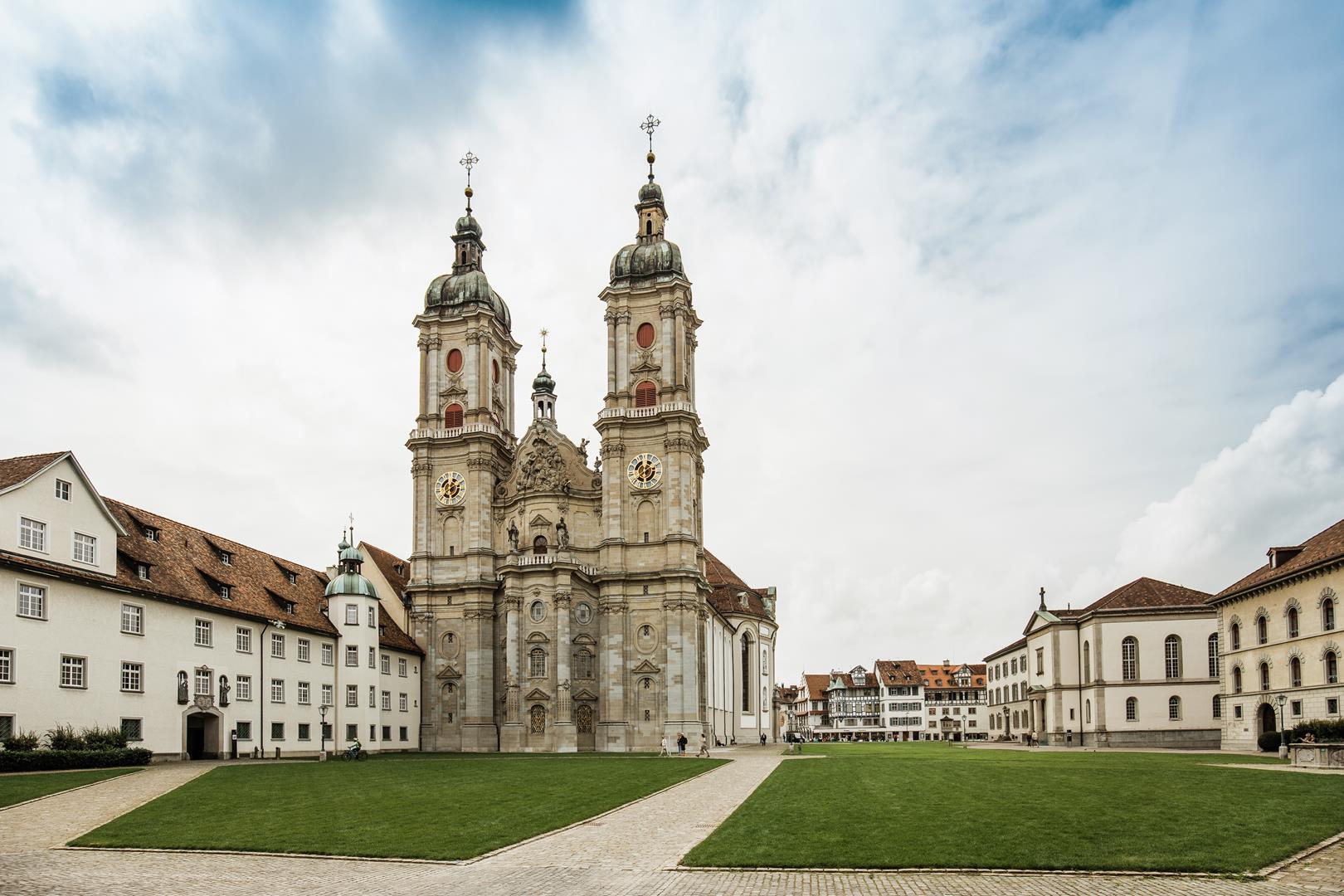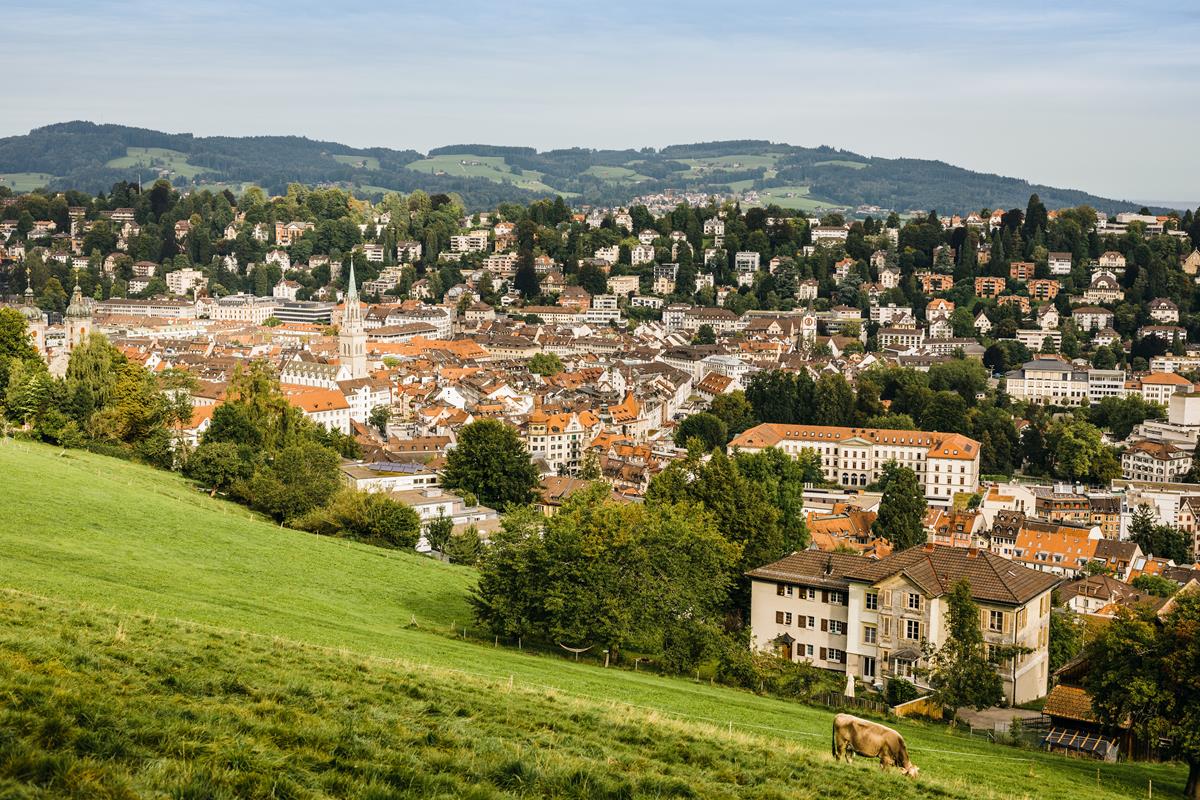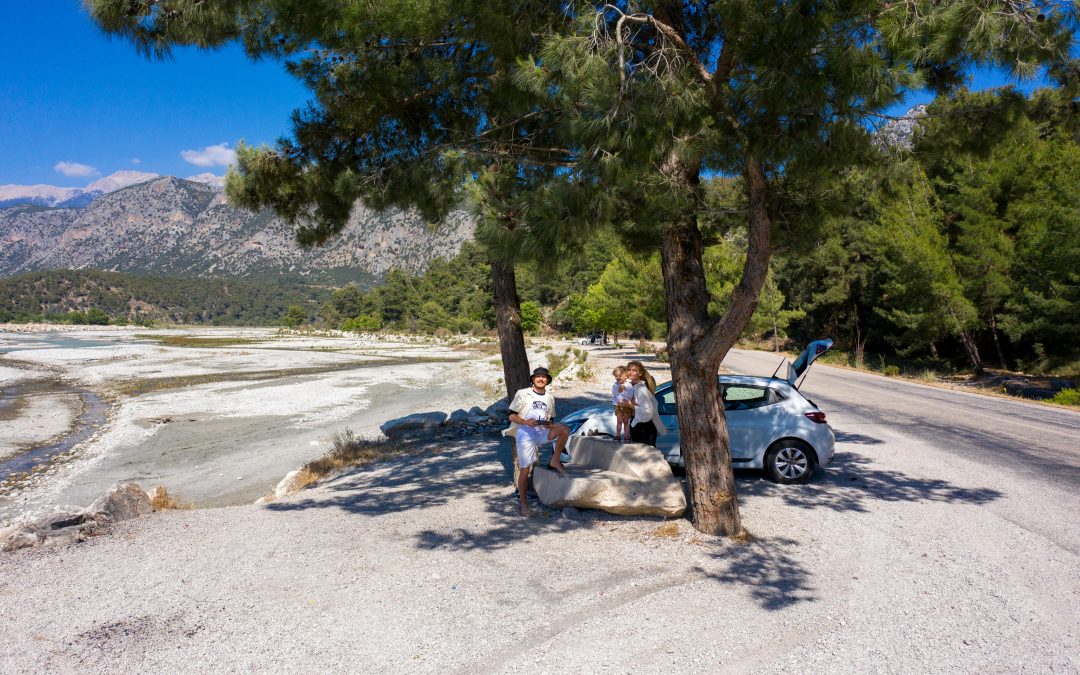St. Gallen and the entire Abbey District preserves a rich heritage dating back centuries

St. Gallen’s Religious Past and Present
Impressive St. Gallen Cathedral, one of the last monumental Baroque monastic constructions in Europe, was built between 1755 and 1767 under the direction of Vorarlberg, Austria native and master builder Johann Michael Beer von Bildstein. Peter Thumb and Johann Caspar Bagnato, two other renowned architects, were also involved in the cathedral’s design. The choir stalls with 84 ornately carved seats and the large organ are works of art themselves. The inside of the church is painted in vibrant bluish-green colors, adorned with stucco and decorated with numerous carvings. Images throughout the cathedral are the expression of a well-considered theological line of thought, and no picture, stucco work or carving is coincidental. Soft lighting and malachite-green stucco create a serene atmosphere.

The Abbey of St. Gallen is an outstanding example of a Carolingian-era monastery and from the 8th century to its secularization in 1805 was viewed as one of the most important in Europe. Founded by Saint Othmar, the Benedictine abbey was an independent principality between the 9th and 13th centuries.
The northern section of the Abbey square in St. Gallen consists of buildings from the 19th century and includes the ancient arsenal, the Children’s and Guardian Angels’ Chapel and the former Catholic school.
The heralded Baroque Abbey Library, dating back to around 820, is one of the most beautiful examples of its era. In addition to the library’s architecture, cultural treasures conserved at the library are of exceptional importance, especially the Irish manuscripts of the 7th and 8th centuries; the illuminated manuscripts of the St. Gallen School of the 9th and 11th centuries; documents concerning the history of the origins of Alemannic Switzerland; and plans of the layout of the convent during the Carolingian era.
The library is home to 170,000 books as well as 2,000 priceless medieval manuscripts, and some 400 of these are more than 1,000 years old. From 1755 to 1768, the conventual area of the library was rebuilt in the Baroque style. Elaborate artworks installed in the ceiling are framed by flowing, curved moldings, giving the space a timeless and even a fantastical aspect.

Exploring St. Gallen
Together the cathedral and library are the main features of this remarkable architectural complex, reflecting 12 centuries of continuous activity. St. Gallen’s cathedral and its world-famous Abbey Library were added to the prestigious UNESCO World Heritage list in 1983. St. Gallen’s Old Town is packed with narrow cobblestone alleyways and lively squares, along with elegant and brightly-painted merchants’ houses from the 16th to 18th centuries. Magnificent bay windows called oriels decorate numerous homes in the Spisergasse, Marktgasse, Kugelgasse and Schmiedgasse areas.
St. Gallen’s traditional textile industry has shaped the townscapes, landscapes and people of Eastern Switzerland. Expertise in textile manufacturing and workmanship has been handed down from generation to generation.
Until the 17th century, the region was mainly known for its high-quality linen and subsequently for cotton products. During its heyday in the 19th century, St. Gallen became one of the leading regions for the export of embroidery. Its Textile Museum is worth a visit. The History and Ethnology Museum collection includes items dating from prehistory and early history to the 20th century as well as many articles from different cultures of the world. The Beer Bottle Museumat Schutzengarten Brewery, the oldest brewery in Switzerland, is another fascinating place for groups to visit. It displays 3,000 beer bottles from 260 Swiss breweries.
St. Gallen also boasts a large choice of lively street cafes and traditional restaurants. An open-air market is held every Wednesday and Saturday, and there are numerous boutiques and quaint shops to visit.
Groups in St. Gallen will find an abundance of opportunities for sightseeing, learning and religious discovery. For more great Switzerland travel planning advice be sure to download the Switzerland Tour Guide and subscribe for FREE to Leisure Group Travel.
By Don Heimburger






